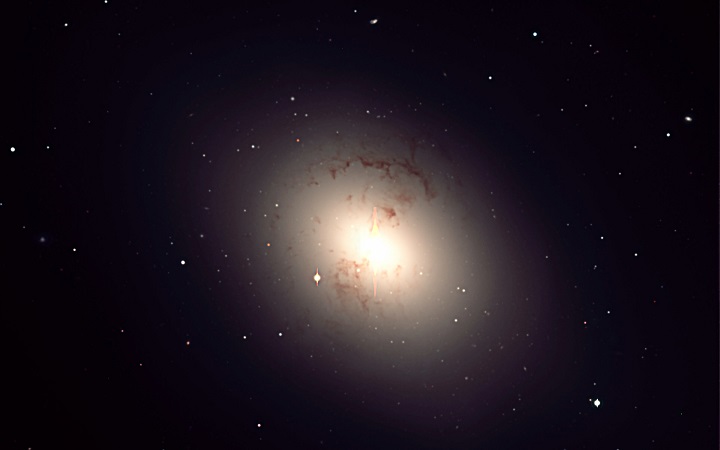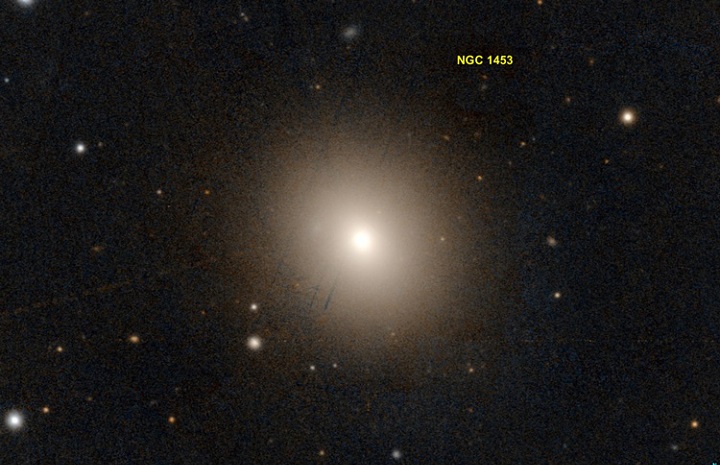
|
| NGC 1316 |
Determining how rapidly the universe is expanding is key to understanding our cosmic fate, but with more accurate data has come a conflict, as estimates based on measurements within our local universe don’t agree with extrapolations from the era shortly after the Big Bang 13.8 billion years ago.
A recent study funded by the National Science Foundation (NSF) intensified this disparity, relying on estimates of the local expansion rate, which is known as the “Hubble constant.”
Estimates differ
Astronomers are understandably concerned about this mismatch, because the expansion rate is a critical parameter in understanding the physics and evolution of the universe and is key to understanding dark energy — which accelerates the rate of expansion of the universe and thus causes the Hubble constant to change more rapidly than expected with increasing distance from Earth.
In the new estimate, astronomers at the University of California in Berkeley and their colleagues measured fluctuations in the surface brightness of 63 giant elliptical galaxies to determine the distance and plotted distance against velocity for each to obtain the Hubble constant.
Data for these galaxies were collected and analyzed by John Blakeslee, an astronomer at NOIRLab of the National Science Foundation, and the author of the paper, which has been accepted for publication in the Astrophysical Journal.

|
| NGC 1453, a giant elliptical galaxy situated in the constellation Eridanus, was one of 63 galaxies used to calculate the expansion rate of the local universe |
Great way to measure distances
The surface brightness fluctuation (SBF) technique is independent of other techniques and has the potential to provide more precise distance estimates than other methods within about 100 Mpc of Earth, or 330 million light years. The 63 galaxies in the sample are at distances ranging from 15 to 99 Mpc, looking back in time a mere fraction of the age of the universe.
“For measuring distances to galaxies out to 100 megaparsecs, this is a fantastic method,” said cosmologist Chung-Pei Ma, professor of astronomy and physics co-analyzing the data for the research.
He added, “This is the first paper that collects a large and homogeneous set of data on 63 galaxies with the aim of studying the cosmological constant (a physical constant developed by the scientist Albert Einstein) using the method of surface brightness fluctuation.”
Technical description
“The whole story of astronomy is, in a sense, the effort to understand the absolute scale of the universe, which then tells us about the physics,” says Blakeslee, referring to James Cook’s trip to Tahiti in 1769 to measure the transit of Venus so that scientists can calculate the true size of the solar system.
“The method of surface brightness fluctuation is applicable to a wider range of galaxies in the surrounding universe, and certainly if we obtain a sufficient number of galaxies using the James Webb Space Telescope, this method has the potential to give the best measurement of the Hubble constant,” he adds.
“Brightness fluctuations are a way of measuring the distance to these giant elliptical galaxies,” says Sarah Higdon, a program director in NSF’s Division of Astronomical Sciences. “The technique is like having a braille map that represents surface brightness and using your fingertips to ‘feel the bumps.’ Elliptical galaxies with a ‘rough texture’ are closer to Earth, and those that are ‘smoother’ are farther away.”
Sources:
- https://www.nsf.gov/discoveries/disc_summ.jsp?cntn_id=302351
- https://news.berkeley.edu/2021/03/08/how-fast-is-the-universe-expanding-galaxies-provide-one-answer/
